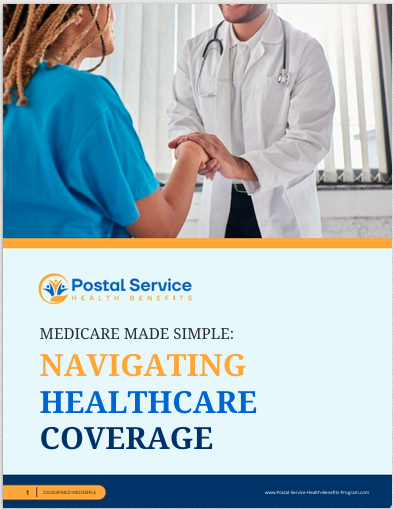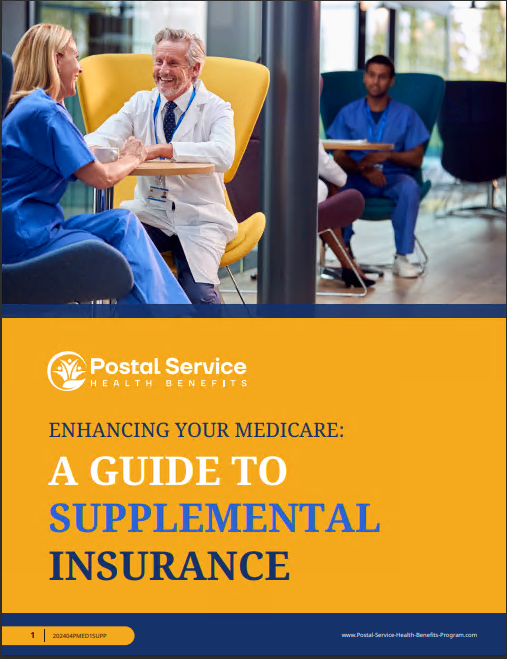Key Takeaways
-
Coinsurance is a cost-sharing mechanism between you and your health plan, requiring you to pay a percentage of covered healthcare costs after meeting your deductible.
-
Understanding coinsurance rates, maximum out-of-pocket limits, and how they interact with other costs can help you make informed decisions about your Postal Service Health Benefits (PSHB) plan.
What Is Coinsurance, and Why Does It Matter?
When it comes to understanding health coverage under the Postal Service Health Benefits (PSHB) program, coinsurance is one of the key terms you need to know. Simply put, coinsurance is the percentage of healthcare costs you’re responsible for paying after meeting your plan’s deductible. For example, if your coinsurance rate is 20%, you’ll pay 20% of the cost for covered services while your plan pays the remaining 80%.
Coinsurance is different from a copayment (or copay), which is a flat fee for services like doctor visits or prescriptions. With coinsurance, the actual dollar amount you’ll pay depends on the total cost of the service.
How Coinsurance Fits Into Your Overall Costs
1. Deductibles: The Starting Point
Before coinsurance kicks in, you’ll need to meet your plan’s deductible—the amount you pay for healthcare services out of pocket before your insurance starts sharing costs. For PSHB plans, deductible amounts in 2025 range from approximately $350 to $500 for low-deductible options and $1,500 to $2,000 for high-deductible options. These variations allow you to choose a plan that aligns with your healthcare needs and financial preferences. Higher deductibles often come with lower premiums, while lower deductibles usually mean higher premiums.
2. Coinsurance Rates Explained
Your coinsurance rate, usually expressed as a percentage, is clearly outlined in your PSHB plan details. Common rates for in-network services range between 10% and 30%, though rates can be higher for out-of-network services. For example, if your in-network coinsurance rate is 20% and a covered service costs $1,000, you’ll pay $200, and your insurance will cover $800.
3. Out-of-Pocket Maximums: The Safety Net
To protect you from excessive healthcare costs, PSHB plans include an annual out-of-pocket maximum. This cap limits the total amount you’ll pay for covered services, including deductibles, coinsurance, and copayments. Once you hit this limit, your plan will pay 100% of covered services for the rest of the year.
Navigating In-Network and Out-of-Network Services
In-Network Advantages
PSHB plans encourage you to use in-network providers by offering lower coinsurance rates for services delivered within the network. In-network providers have pre-negotiated rates with your insurance plan, which means you’ll pay less overall.
Out-of-Network Challenges
Using out-of-network providers can lead to significantly higher costs. Coinsurance rates for out-of-network services are often double or triple those for in-network care, and these expenses may not count toward your out-of-pocket maximum. Always review your PSHB plan’s network details to minimize unexpected costs.
Coinsurance and Preventive Care
It’s worth noting that many PSHB plans offer 100% coverage for preventive care services like annual checkups, vaccinations, and screenings. These services typically don’t require coinsurance, allowing you to access essential care without additional costs. Preventive care can help you stay healthy and catch potential health issues early, reducing your need for more expensive treatments down the line.
How Coinsurance Affects Prescription Drug Costs
Prescription drug coverage is a vital component of PSHB plans, and coinsurance plays a role here as well. Drugs are often categorized into tiers—generic, brand-name, and specialty medications. Your coinsurance rate will depend on the drug’s tier. While generic medications may come with a lower coinsurance rate, specialty drugs often have higher rates, which can add up quickly.
To manage these costs, consider using mail-order pharmacies or exploring formulary options under your PSHB plan. These strategies can help you save money on prescriptions.
Coinsurance vs. Copayments: Key Differences
Although coinsurance and copayments are both out-of-pocket costs, they work differently:
-
Copayments are fixed amounts (e.g., $20 per doctor visit) you pay at the time of service.
-
Coinsurance is a percentage of the cost of a service, which can vary depending on the total bill.
Understanding when each applies can help you budget more effectively for healthcare expenses under your PSHB plan.
Managing Coinsurance Costs Strategically
1. Use Preventive Services
Take full advantage of the preventive services your PSHB plan covers at 100%. These services can help you avoid more costly treatments that require coinsurance.
2. Choose In-Network Providers
To minimize coinsurance costs, stick to in-network providers whenever possible. Your PSHB plan’s network directory is a valuable resource for finding participating doctors, hospitals, and pharmacies.
3. Budget for Your Deductible and Coinsurance
Setting aside money in a Health Savings Account (HSA) or Flexible Spending Account (FSA) can help you cover out-of-pocket costs, including coinsurance. These accounts allow you to use pre-tax dollars for eligible expenses, offering significant savings.
4. Review Your Plan Options Annually
Each year, during Open Season, review your PSHB plan’s coinsurance rates, deductibles, and out-of-pocket maximums. Changes to your healthcare needs or financial situation might make a different plan more suitable.
Special Considerations for Medicare-Eligible Annuitants
If you’re a Medicare-eligible Postal Service annuitant, your coinsurance responsibilities may be reduced or eliminated when Medicare is your primary coverage. Many PSHB plans coordinate with Medicare Part A and Part B by acting as secondary coverage, which means Medicare pays first, and your PSHB plan covers remaining costs like deductibles, coinsurance, and copayments. This coordination often reduces or even eliminates out-of-pocket expenses for covered services, providing significant financial relief for enrollees. This integration can result in substantial savings, but it’s essential to understand how your plan interacts with Medicare.
Key Terms to Keep in Mind
Here are a few key terms that will help you better understand coinsurance under your PSHB plan:
-
Deductible: The amount you pay out of pocket before coinsurance begins.
-
Coinsurance Rate: The percentage of covered costs you’re responsible for after meeting your deductible.
-
Out-of-Pocket Maximum: The most you’ll pay in a year for covered services.
-
In-Network Provider: A healthcare provider that has an agreement with your insurance plan to offer services at reduced rates.
-
Formulary: A list of prescription drugs covered by your plan, categorized into cost tiers.
Common Misconceptions About Coinsurance
“Coinsurance Covers Everything”
While coinsurance does help cover a significant portion of your healthcare costs, it applies only to services deemed “covered” by your plan. Always check your plan’s list of covered services to avoid unexpected bills.
“Reaching My Deductible Means I’m Done Paying”
Meeting your deductible is just the first step. You’ll still be responsible for coinsurance until you hit your out-of-pocket maximum.
“Out-of-Network Costs Always Count Toward My Maximum”
Not all out-of-network expenses count toward your out-of-pocket maximum, and they often come with higher coinsurance rates. Be sure to verify this detail in your PSHB plan.
Make the Most of Your PSHB Plan
Understanding coinsurance is crucial to making the most of your Postal Service Health Benefits plan. By knowing how coinsurance fits into your overall healthcare costs and adopting smart strategies, you can minimize expenses and maximize the value of your coverage. Take the time to review your plan’s details, ask questions when needed, and explore options like preventive care and Medicare integration to ensure you’re getting the best possible care without breaking the bank.







